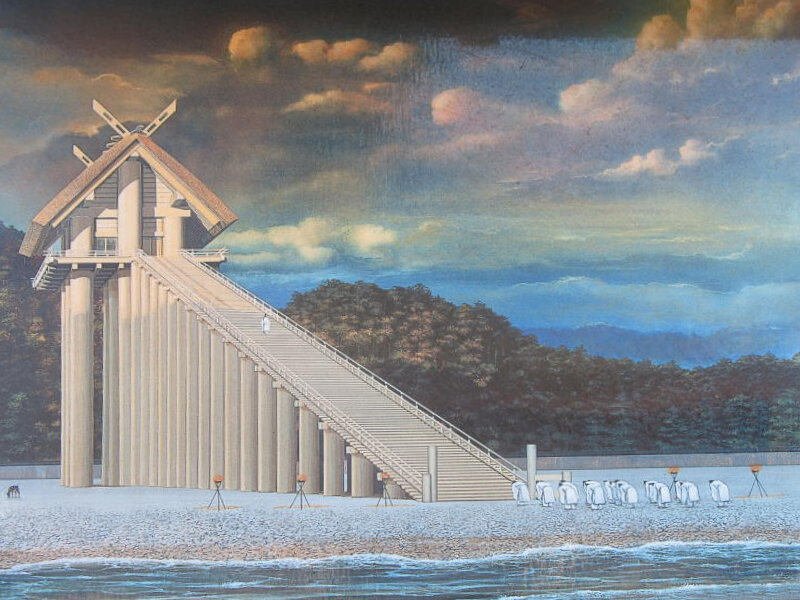The Izumo-taisha Shrine
Artist rendering of the Izumo-taisha Shrine, circa 950AD. How do you convey the importance of your temple to others? Raise it 48 meters above the ground, of course.
The ancient Izumo-taisha Shrine in southern Japan, built sometime around the 10th century AD, has all the ingredients of verticality in its built form. The structure pictured above no longer exists, and we don't know exactly how it looked, but some records claim that the ancient temple was raised as high as 48 meters above the ground.[1] At first glance, you might wonder, why would the builders go to such lengths to raise the temple so far off the ground? The answer, of course, is to convey its importance to others through its height. When a building is raised up above the ground, the builders are saying two major things about their structure:
The first is: this building and its functions are too important to reside on the surface with the rest of us. The surface is where we all live our lives, so important buildings must be raised up above the ground to signify their importance to others. Think about it: nearly every significant religious, civic or governmental building you've ever entered required some sort of ascension (usually a staircase) to reach the front door. This ascension is symbolic of a transition to a higher plane that is more important than the day-to-day life of a person.
A 1:10 scale model of how the ancient shrine may have looked, from the Shimane Museum of Ancient Izumo. Image from Japan-Guide.com. Image source.
The second is twofold: either you must be important to enter, or you must put in an effort to enter. Traditionally, important temples and religious buildings were considered sacred, and were only entered by high-ranking priests and holy men. The rest of society were not generally permitted entry. This was true all over the world, including temples in Ancient Greece, pre-Columbian Inca, Aztec and Maya temples, the Ziggurats in Ancient Mesopotamia, and many others. When entry was granted to common people, it would take a notable effort to reach the front door by way of the building's height. This was achieved either by raising up the building onto a high platform, like the Izumo-taisha Shrine, or by placing the building on an existing hilltop or high place, which was common in the ancient world as well.
[1]: See: "Izumo-taisha." Wikipedia. Accessed March 14, 2019. Available at https://en.wikipedia.org. and "Shimane Museum of Ancient Izumo." Japan-Guide. Accessed March 14, 2019. Available at https://www.japan-guide.com.


